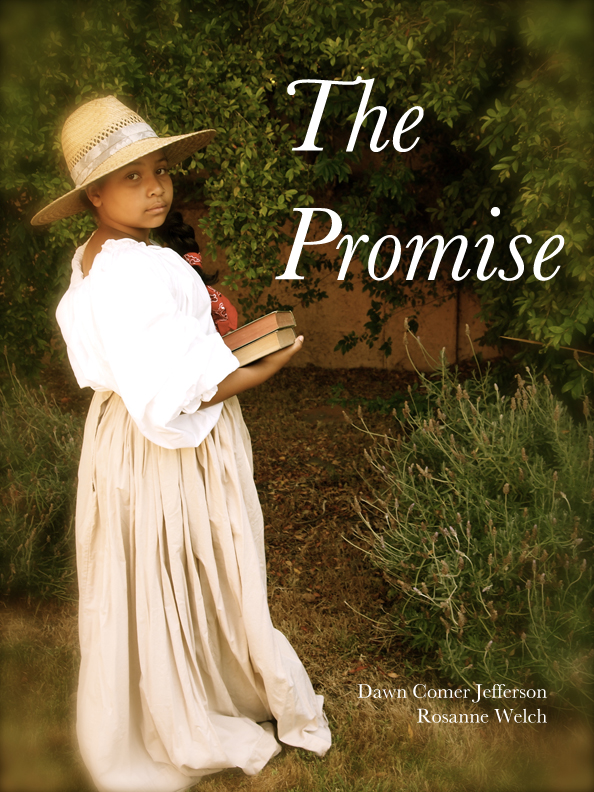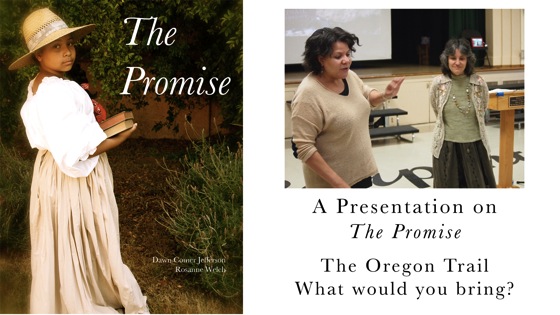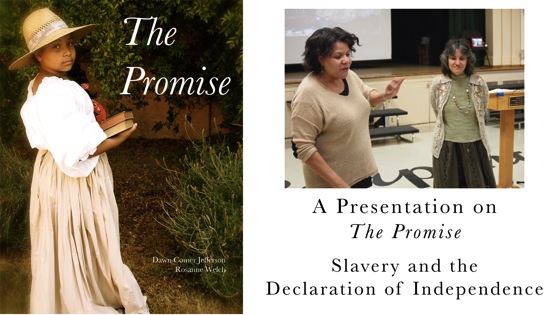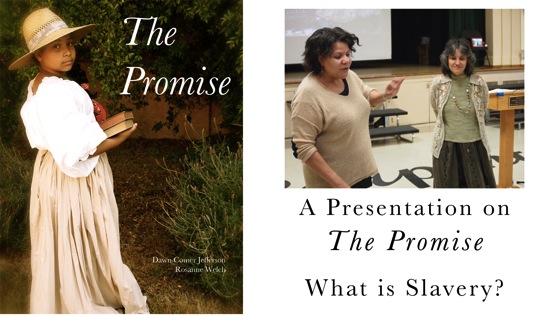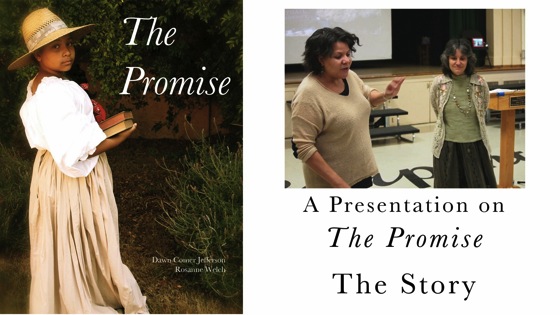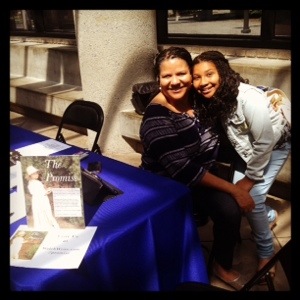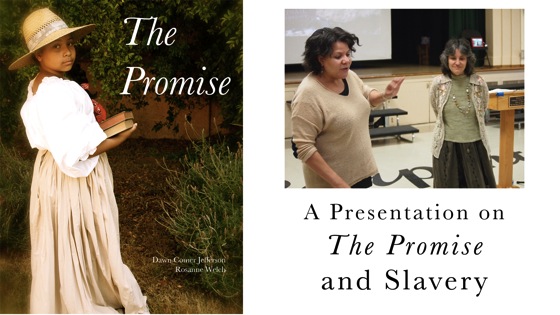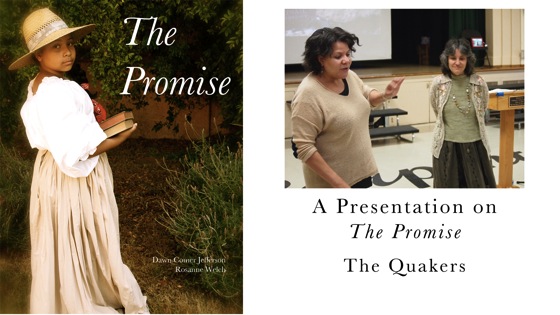
Dawn Comer Jefferson (L) and Dr. Rosanne Welch (R) present on their book, The Promise
On Friday March 21st my co-author, Dawn Comer Jefferson and I had the pleasure of making a presentation on “Slavery and the Oregon Trail” based on our book The Promise to the 3rd, 4th and 5th grades of Carpenter Avenue Elementary School as the guests of the non-profit Parents For Carpenter.
Transcript:
Comer Jefferson: So you brought together lots of different types of people with lots of different believes and lots of different religions and one of the things that this family met along the way — they met Quakers. Quakers on the trip believed that everyone should be treated equally. so, one of the things our family find on the trail is that – some people got to ride in the wagons, but all of the children had to walk, for the most part.
Welch: Oh yes, walking from Missouri to Oregon. You start now. Let’s see how far we all get.
Comer Jefferson: …and then the women had to, too, sometimes. So, it was a different experience for our family because they were used to only the slaves having to do the difficult things.
